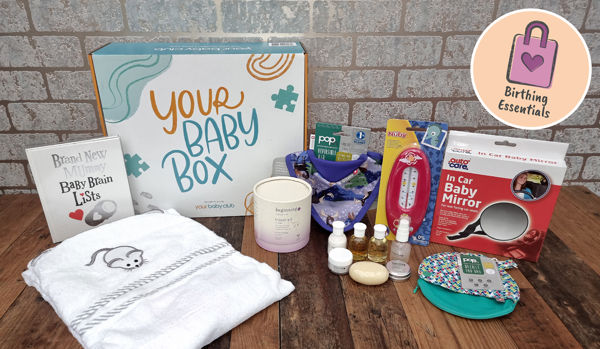Learning that you are pregnant can be an overwhelming piece of information. You could be overwhelmed with joy when you were hoping for it or with panic if it was not planned. When this news is then compounded by the fact that you are expecting multiples (twins, triplets or even more!), it surely does come as a surprise! It’s a pleasant surprise, for those who see it as a bonus and a shock, for those who see it as double trouble.
As an expert, I would agree with both schools of thought. Even though it is one pregnancy giving you double the joy, it does come with a few concerns during the pregnancy and thereafter. I would like to tell you about these, not to dampen your spirits after receiving this amazing news but just to prepare you for the wonderful journey ahead.
There is no way of predicting who would have multiple pregnancy, but usually, older women, conceptions after fertility treatments and those women who have other multiples in their families are more likely to have a multiple pregnancy.
What kind of multiples you have is something that is determined by the scan done early in the pregnancy, before 14 weeks and this helps your health care professional to plan your care better. In medical terms, it is referred to as “chorionicity” which essentially means the number of placentae/afterbirths in that pregnancy. This is important because, in pregnancies where the babies share a placenta, the sibling rivalry may begin in the womb itself! What I mean to say is the complications in such pregnancies are higher, requiring closer monitoring for the mums.
Talking about the first trimester with multiples, most common pregnancy symptoms like morning sickness, tiredness, aches and pains can be exaggerated compared to while expecting one. Taking adequate rest, good support and seeking professional help when needed surely goes a long way.
Having twins or more definitely does not mean eating for three or more. Having a healthy diet and a balanced diet is all that is required. Only the last trimester is when an extra 200-300Kcal per day is needed. Iron-rich foods like beans, nuts, dried fruits, fortified foods and soybean could be worthwhile because the demand is higher and the chances of anaemia are more. This is also the reason why in multiple pregnancies your bloods would be checked on three occasions during pregnancy for anaemia. You may be given supplements if found to have anaemia.
Scans in multiple pregnancies may talk longer because your sonographer will have to assess both the babies each time. However, watching them play in the womb and hearing the two heartbeats will make it worth the wait! With multiples, screening for Downs and other anomalies are best handled by experts in the field of Foetal medicine and you may be referred to them. The aim is to provide the finest care, even though it might seem like an inconvenience to go to different centres for a check-up at times.
With two or more babies, examining each one separately just by the feel of the bump is not possible and therefore in multiple pregnancies, scans are the best way to do so. The frequency of scans would depend on the type of multiple pregnancy. When the placenta is shared, more frequent scans would be required to rule out or detect any complications at the earliest and take appropriate actions to minimize them.
Your Baby Club and Center Parcs are giving you a chance to win a family break in a Woodland Lodge at a UK Center Parcs village of your choice.
Sharing of the placenta could lead to competition for nutrition between the babies and one baby could grow at the cost of others which is called selective foetal growth restriction. In every scan, the sonographer would watch out for this. Another condition that fortunately is not very common, but can arise is 15 in 100 pregnancies with the shared placenta is called twin to twin transfusion which in simple terms means one baby loses blood to the other making one the donor and the other the recipient twin. Complications like this would be handled by experts and prompt referrals would ensure better outcomes.
Your bump will be bigger earlier and you may start showing even before your peers with a single baby. This can also cause more discomfort like backaches, shortness of breath and difficulty getting around or finding the best position to rest. Mentioning this during your visits may help your carers to organise physiotherapy appointments and examine you to ensure there are no other causes for your symptoms.
In a singleton pregnancy with no other complications, the delivery is usually planned between 40-41 weeks. But in multiple pregnancies, babies mature earlier and most women go into labour earlier, before 37 weeks. This is mostly explained due to the overstretching of the womb and earlier release of chemicals that bring about labour normally. Prolonging the pregnancy beyond could have potential complications as the placental function and supply to the babies beyond 37 weeks is poorer. More the number of babies earlier could be the delivery. Travel beyond 32 weeks in multiple pregnancies may not be advisable especially air travel or abroad as the risk of going into labour is higher. Always consult your health carer before making plans. There are no recommended ways to prevent early labour so having a birth plan earlier on in the pregnancy would ease the anxiety.
When delivery is planned or labour starts on its own before 37 weeks you would be offered a set of injections called steroids to cause babies’ lungs to mature. Certain drip called magnesium sulphate may be offered for 24 hours, if you deliver before 34 weeks to prevent cerebral palsy in the babies. Babies born preterm may need to be monitored and cared for longer in the hospital before discharge.
Having twins does not mean you cannot deliver vaginally. It depends on how your first baby is positioned in the womb if your baby is bottom first then a caesarean would be considered. However, with triplets or more caesarean is considered the safer mode of delivery. Your carers would be the best to help you plan your delivery, which’s ideal in your scenario. Labour analgesia options would be the same as other deliveries. The need for interventions like emergency caesarean or instrumental delivery is slightly higher in labour. You would be given injections soon after delivery to minimize the risk of heavy bleeding.
Breastfeeding two or more babies could pose a challenge, working out a schedule with a feeding assistant can make things easier. They say it takes a village to bring up a child and of course good support for the mummy can ward off the risks of postpartum depression. Mummy support groups or classes even if online could be a good change and form of social life.
Logistics of having multiples like multiple car seats, multi-seated buggies are to be kept in mind, consider having a customised gift registry for your baby showers. This would help your loved ones to pitch-in with functional gifts that are apt for your situation. During the nesting period, working out a financial plan to support a big family with an expert could ease the pressures too.
Congratulations on your fantastic news and I wish you the very best in this pregnancy.








